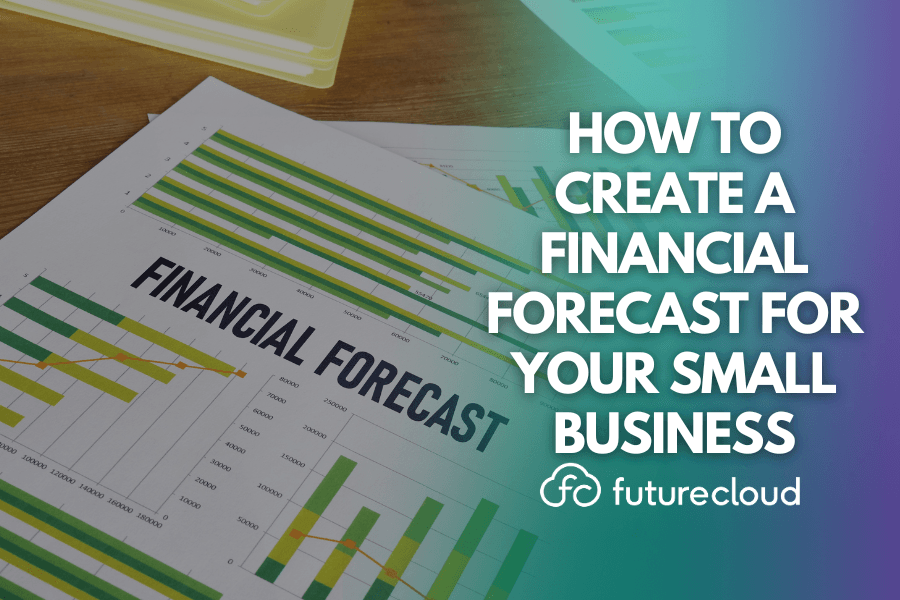Running a small business means juggling many risks and uncertainties. One of your strongest tools to manage that uncertainty is a financial forecast, a reasoned prediction of your business’s financial future. If it’s done well, it helps you make informed decisions, anticipate problems before they arise, and communicate with stakeholders (investors, lenders, partners).
In this blog, we’ll walk you through what forecasting is, why it matters, how to build one, and practical tips to get started, especially for small businesses operating in the UK in 2025.
What is financial forecasting?
Put simply, a financial forecast is a way of predicting what your business might look like financially over the coming months or years. It’s a bit like planning a route on a map, you’re not trying to guess every bump in the road, but you want to know where you’re going and what might be coming up.
Most financial forecasts include things like expected income (from your sales), costs (like rent, stock, wages), and profit. You might also look at your cash flow, how money moves in and out of your business each month, and your balance sheet, which is a snapshot of what your business owns and owes.
The aim isn’t to be 100% accurate (no one has a crystal ball), but to give yourself a realistic picture of how your business is likely to perform, based on what you know now.
Why it’s worth doing
There are a few really good reasons to start forecasting, even if you feel like your business is still small.
First of all, it helps with decision-making. If you’ve got a clearer idea of what your income and expenses will look like, you can make better choices, whether that’s deciding to hire someone, invest in equipment, or hold off on a big spend.
Forecasting also helps you spot problems before they happen. For example, if your forecast shows that cash might be tight in a few months, you can do something about it now, like chasing invoices early or speaking to your bank, rather than panicking when it’s too late.
It’s also useful if you’re applying for funding or trying to attract investors. Having a solid forecast shows that you understand your business, you’ve thought ahead, and you’re serious about growth.
And finally, it’s a good way to measure how your business is doing. If you check in with your forecast regularly, you can compare it to your actual results and see where you’re doing better (or worse) than expected.
How to build a financial forecast (without overcomplicating it)
You don’t need to be an accountant to build a forecast, although working with one can definitely help (us)! If you’re just starting out, a simple spreadsheet is usually all you need. Here’s how to get going.
Start by looking at your income. Think about how much you expect to sell over the next 6 to 12 months. Use your previous sales if you have them, or if you’re new, base it on what you reasonably think you can achieve. It’s better to be a bit cautious than wildly optimistic.
Next, work out your costs. This includes everything from rent and staff wages to the cost of materials, subscriptions, bills, and so on. Again, be realistic, and don’t forget the things that only come up occasionally, like insurance renewals or tax bills.
Then look at your cash flow. This is all about timing. You might make a sale in January but not get paid until February, and you’ll probably have bills to pay in between. A cash flow forecast shows when money will actually land in your account and when it’s going out. It’s one of the most important parts of a forecast, especially for small businesses, because it helps you avoid running out of cash.
Finally, review the bigger picture. How do your profit and cash position look at the end of each month? Are there any warning signs? Any big gaps or opportunities? This is the part where you can test different ideas. For example, what happens if you raise your prices, or if you hire someone in March instead of January?
Common mistakes (and how to avoid them)
One mistake lots of people make is being too optimistic, thinking they’ll double sales in three months or that clients will always pay on time. Try to be honest with yourself and build in a bit of a buffer for unexpected costs or delays.
Another common pitfall is making a forecast and then never looking at it again. Forecasts are most useful when you treat them as a living document. Check in with yours monthly, compare it to your actual numbers, and tweak it as you go. It’s fine to change direction, in fact, that’s the point.
It’s also easy to get overwhelmed and overcomplicate things. If you’re new to forecasting, keep it simple. You can always add more detail later as you get more confident.
Do I need an accountant to do this?
Having one can make a big difference, especially if you want to go beyond the basics or get a second opinion. A good accountant can help you build a solid forecast, sense-check your assumptions, and give you advice based on their experience with other businesses.
They can also help you understand what your forecast is telling you. For example, whether your pricing is sustainable or if your overheads are creeping up. And if you’re applying for funding or pitching to investors, having a professional‑looking forecast can give you extra credibility.
Final thoughts
Financial forecasting might not sound like the most exciting part of running a business, but it really is one of the most valuable. It gives you clarity, helps you plan with confidence, and gives you space to grow, not just react.
You don’t need to be perfect, and you don’t need to get everything right the first time. Just start with what you know, build from there, and keep checking in.
And if you ever feel stuck or unsure, we’re here to help. Forecasting is something we work on with clients all the time. We can help you to understand your cash flow better or build a full plan for the year ahead.
Need a hand? Just get in touch and we’ll make the numbers make sense.
Email us at info@future-cloud.co.uk
And don’t forget to follow us on social media for the latest updates, tips, and more!


